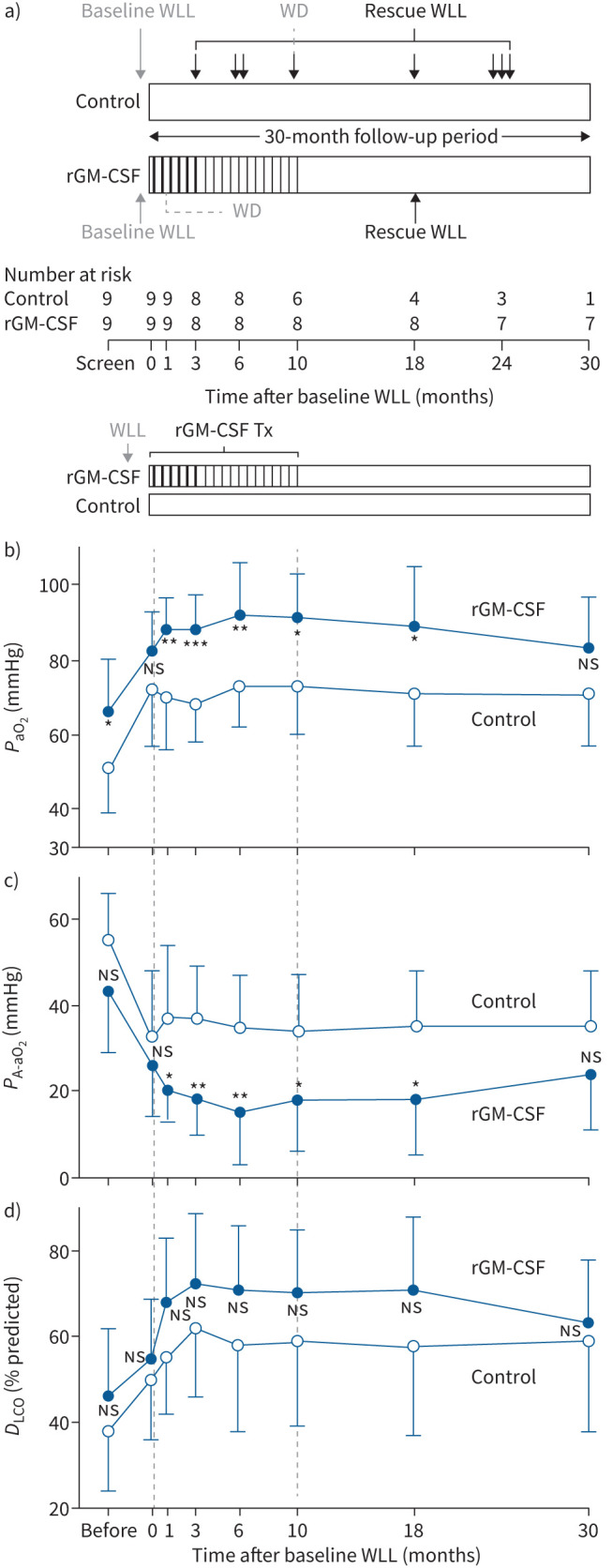FIGURE 3.

Effects of inhaled recombinant granulocyte–macrophage colony-stimulating factor (rGM-CSF) on pulmonary gas transfer. a) Schematic showing for each study group the administration of the baseline whole lung lavage (WLL) (grey arrows) and unscheduled rescue WLL (black arrows), and inhaled rGM-CSF administered as induction therapy (thick vertical black lines) or maintenance therapy (thin vertical black lines). Open boxes indicate follow-up periods without scheduled intervention. The number of participants who have not yet required an unscheduled rescue WLL at each study visit is shown (number at risk). The times at which two study subjects withdrew (WD) from trial participation for personal reasons is indicated. b) Mean peripheral arterial oxygen tension (PaO2) at each visit for each group (indicated). c) Mean alveolar–arterial oxygen tension difference (PA–aO2) at each visit for each group. d) Mean diffusing capacity of the lungs for carbon monoxide (DLCO) % predicted at each visit for each group. T-bars represent the standard deviation. The timing of administration of inhaled rGM-CSF as induction therapy (thick vertical black lines) or maintenance therapy (thin vertical black lines) to participants in the rGM-CSF group as well as periods with no scheduled intervention are shown above b for b–d. The dashed vertical lines in panels b–d indicate the beginning and end of inhaled rGM-CSF therapy (months 0 and 10, respectively). Tx: therapy; ns: nonsignificant; *: p<0.05; **: p<0.01; ***: p<0.001, for between-group comparison at each visit.
